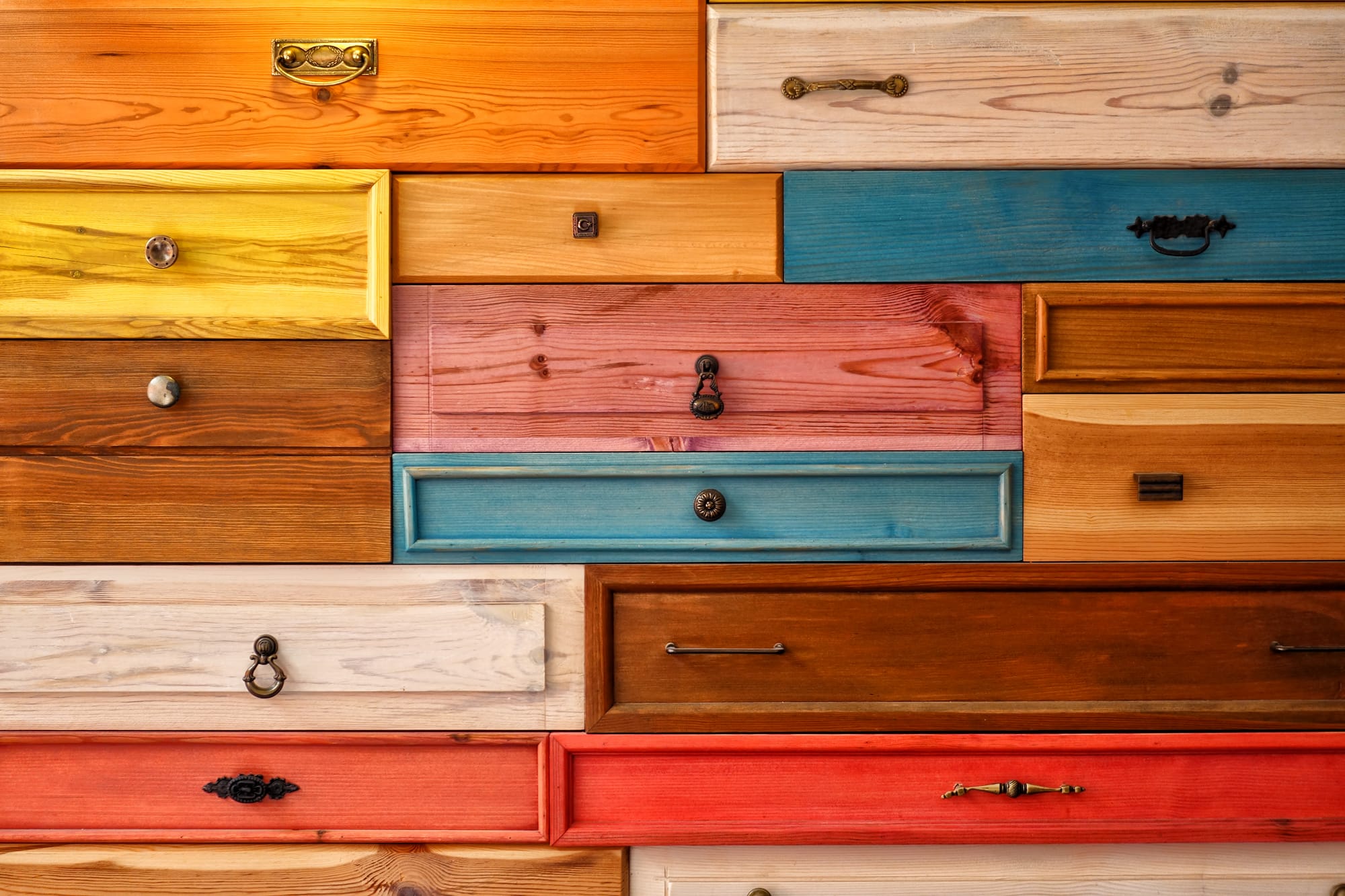It's Time... To Refinish Those Old Cabinets

Revamping your kitchen doesn't always mean a full-blown renovation. One of the most effective ways to breathe new life into your space is through cabinet painting and refinishing. Not only is this approach cost-effective, but it also offers a plethora of customization options to suit your style.
What is Cabinet Painting and Refinishing?
Cabinet painting involves applying a fresh coat of paint to your existing cabinets, while refinishing typically entails stripping off the old finish and applying a new stain or paint. This process can transform outdated or worn cabinets into modern, stylish focal points in your kitchen.
Why Choose to Refinish or Paint Your Cabinets?
- Cost-Effective Transformation: Replacing kitchen cabinets can be a significant investment. Refinishing or painting allows you to achieve a new look at a fraction of the cost. According to The Spruce, cabinet refacing costs around $8,300 for a full-size kitchen, whereas painting and minor repairs range between $30 to $60 per linear foot.
- Minimal Disruption: Unlike a full remodel, which can leave your kitchen unusable for weeks, cabinet refinishing is less invasive. Services like N-Hance offer processes that are dust-free, odor-free, and can be completed in as little as a day.
- Eco-Friendly Option: By opting to refinish rather than replace, you're reducing waste, making it a more environmentally friendly choice.
The Refinishing Process
- Assessment: Determine if your cabinets are good candidates for refinishing. They should be structurally sound without significant damage.
- Preparation: Remove all cabinet doors and hardware. Clean surfaces thoroughly to eliminate grease and grime.
- Sanding: Sand the surfaces to create a smooth base for the new finish. This step is crucial for adhesion.
- Priming: Apply a high-quality primer to ensure the paint or stain adheres properly and lasts longer.
- Painting or Staining: Apply your chosen paint or stain. For durability, products like Sherwin-Williams' Emerald Urethane Trim Enamel are recommended.
- Sealing: Once the paint or stain is dry, apply a protective topcoat to enhance durability and sheen.
- Reassembly: Reattach doors and hardware once everything is completely dry.
DIY vs. Professional Services
While DIY refinishing is possible, it requires time, patience, and a certain level of skill. Professionals, like those at CertaPro Painters®, offer expertise and efficiency, ensuring a high-quality finish. They handle everything from surface preparation to the final coat, often completing projects in a shorter timeframe.
Choosing the Right Finish
- Paint: Offers a clean, modern look with a vast array of color options. It's ideal for achieving a complete transformation.
- Stain: Enhances the natural beauty of the wood grain, providing a classic and timeless appearance.
Maintenance Tips
- Regular Cleaning: Wipe down cabinets with a damp cloth to prevent grease buildup.
- Avoid Harsh Chemicals: Use mild detergents to maintain the finish.
- Handle with Care: Be gentle when opening and closing doors to prevent chipping.
Cabinet painting and refinishing offer a practical and stylish solution to update your kitchen without the hefty price tag of a full renovation. Whether you choose to tackle the project yourself or hire professionals, the result can be a stunning transformation that breathes new life into your space.
Do You Have Questions? Give Us A Call With Any & All! 503-389-5758
-
People Also Ask:
What are the main differences between acrylic and latex paint?
Acrylic paint is known for its durability and flexibility, making it suitable for outdoor environments and areas exposed to harsh conditions. It's made with a synthetic resin that helps it withstand the elements. Latex paint, on the other hand, is water-based and popular for indoor walls and ceilings due to its quick-drying nature and ease of cleanup.
Why should I choose low-VOC paints for indoor projects?
Low-VOC (Volatile Organic Compounds) paints are recommended for indoor projects because they emit fewer harmful chemicals into the air, improving indoor air quality and reducing health risks. These paints are particularly important in enclosed spaces or homes with children, the elderly, or those with respiratory issues.
Can acrylic paint be used indoors as well as outdoors?
Yes, acrylic paint can be used both indoors and outdoors. Its versatility is due to its durable nature, which makes it resistant to weathering and capable of retaining color and finish over time. However, due to its strong odor and chemical composition, proper ventilation is essential when using it indoors.
-
Subscribe to Our Blog & Elevate Your DIY Game! Never miss a beat! Join the Lightmen Painting community and get the latest insights on painting, DIY projects, and expert tips delivered straight to your inbox.
Have something specific in mind? We’d love to hear your ideas! Let us know what topics or projects you’re curious about—your input could shape our next post.
Subscribe now and let’s transform your spaces together!
If your in the Portland, Or. area and need advice or a free no obligation estimate call us at 503-389-5758 or email scheduling@lightmenpainting.com
Definitions
- Acrylic Paint: A type of paint made with a synthetic resin as the binder, known for its durability and ability to resist weathering.
- Latex Paint: Water-based paint, which uses synthetic polymers as binders. Known for its quick drying time and ease of use.
- VOCs (Volatile Organic Compounds): Organic chemicals that have high vapor pressures at room temperature and can affect indoor air quality.
- Sustainability: Measures how environmentally friendly a paint is, considering factors like VOC levels and the impact on indoor and outdoor environments.
- Durability: The ability of paint to withstand wear, pressure, or damage; crucial for paints used in high-traffic or exposed areas.
- Flexibility: Refers to a paint’s ability to expand and contract without cracking, essential for outdoor applications.
- Ease of Application: How simple the paint is to apply, including factors like drying time and required equipment.
- Longevity: The length of time paint will last before it needs a touch-up or repainting.
- Cost-Effectiveness: Evaluates the initial cost versus the long-term benefits of a paint, including maintenance and frequency of repainting.
- Environmental Impact: Considers the effects of paint products on the environment, focusing on factors like VOC emissions and sustainability.
Lightmen Painting Serving: Portland, Tigard, Lake Oswego, Tualatin, West Linn, Milwaukie, Sherwood, Happy Valley, Oregon City, Beaverton, Hillsboro, Gresham
